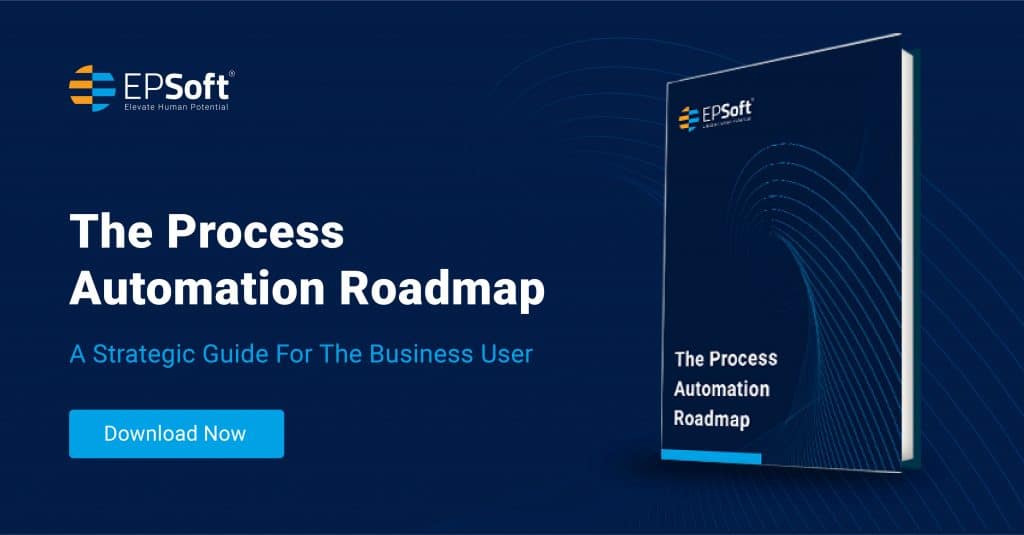
Robotic process automation (RPA) and intelligent automation (IA), sometimes also called intelligent process automation (IPA), provide today’s businesses with a number of advantages for operational efficiencies and cost savings. But, as early adopters have struggled to integrate technology, and the technology industry grows increasingly complex, it’s becoming clear that implementation of RPA and IA require thoughtful strategy.
Our latest white paper dives into this concept head-first, laying out the components you’ll need to build a strategy-first roadmap for Robotic Process Automation (RPA) and IA.
Here’s what you’ll find inside:
Intelligent Process Automation Roadmap
1. Building the Plan. Learn everything there is to know about intelligent process automation and business process management, and the dynamic they will have within your company. This first chapter of the paper digs into the importance of things like creating business cases for your automation plan, aligning stakeholders, creating documentation strategies and more.
2. Governance. Understand the role that governance plays in tech implementation, and why it’s such a key factor to scalability. Learn how to build strike teams, identify key performance metrics, and how to create a structure for governance that is lasting and accessible.
3. Automation Development. With plans mapped out and in place, it’s time to begin designing and developing automations. Learn what to look for in technology partners and platforms, and how to approach development in a way that maximizes your investment, with considerations like Process Intelligence and orchestration.
4. Automation Deployment. Here, we dive into the rollout of the automations. Learn about key factors for consideration, like integration with other technologies, how orchestration will work within your company and more, as you begin to push your automations live.
5. Test, Manage and Monitor. This is the phase where intelligent automation really proves what it is worth. In this chapter, learn how to continually make improvements with business process management, using data to shape, test, reshape and optimize workflows.
6. Scale. Scaling with automation is no simple feat. But, with advanced planning and proper execution of your own roadmap, you’ll be positioned to integrate your technologies thoughtfully, and to leverage your efficiencies into ongoing business improvements.
This is just a small sample of some of the things we discuss in our latest paper. If you’ve been looking for a comprehensive guide to automation technology implementation, you don’t want to miss this free download. Get your copy of The Process Automation Roadmap here.
One note from our technology team to yours: While it’s tempting to look at this outline as a simple to-do list, it’s a wiser strategy to look at all of this information as reference material that can be incorporated into a bigger, enterprise-wide strategy.
Have questions about the white paper? Want to talk about improving automations you’ve already started? Let’s talk. Schedule a free consultation today.

